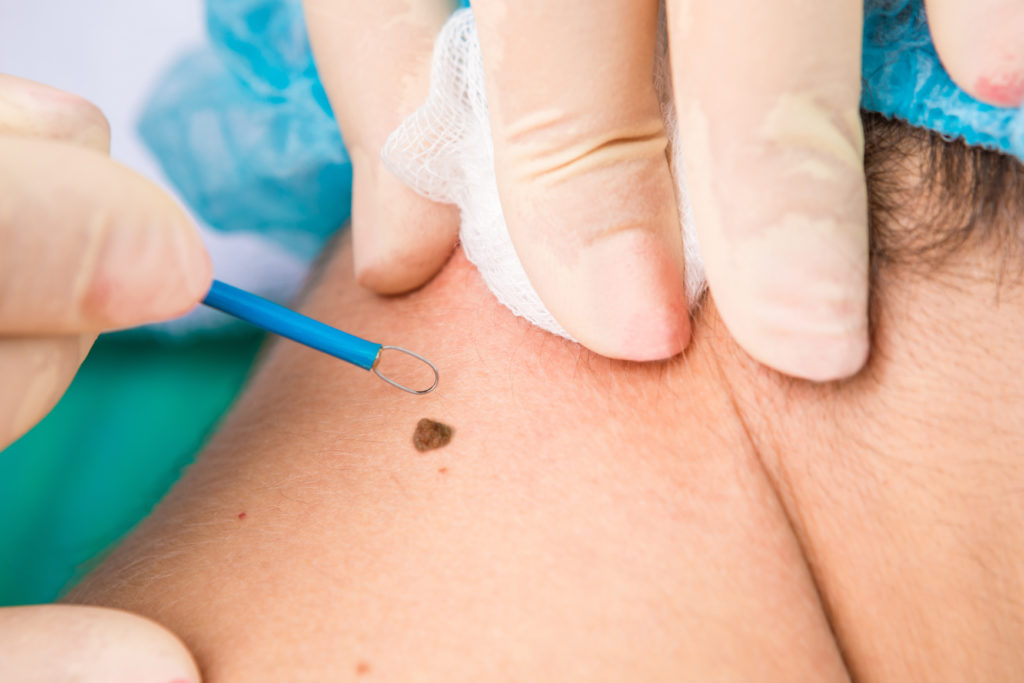Moles are small, usually dark-colored skin growths that develop from pigment-producing cells (melanocytes) present in the skin.
- Most people have some moles or warts, but the predisposition to having atypical moles/warts is sometimes genetic.
- Moles/moles that show significant changes and atypical moles/moles should be biopsied for the possibility of melanoma
- Most noncancerous (minor) moles do not require treatment, but moles that are uncomfortable or interfere with aesthetics can be removed with a scalpel and local anesthetic.

Moles range in size from tiny dots to more than 1 inch (about 2.5 centimeters) in width, but are usually smaller than 1 centimeter and most commonly smaller than 6 millimeters (about ¼ inch). Almost everyone has some moles/warts and many people have them in large numbers. People who have more than 50 moles have a slightly higher risk of melanoma, which is a cancerous (harmful) growth of melanocytes.
They should monitor themselves for changes in their moles (see ABCDEs of Melanoma) and have them checked periodically as part of their primary care.
Moles may be flat or raised, smooth or rough (wart-like), and may have hair growing on them. Moles/warts are usually skin-colored, yellow, brown, blue-gray, or almost black. They may be red at first but often become darker.
Moles/warts usually develop in childhood or adolescence and existing moles/warts often enlarge (in proportion to body growth) and may become darker in color. In some people, moles/warts continue to grow throughout their life. Moles/warts can occur anywhere on the body. Moles respond to changes in hormone levels in women and may become darker during pregnancy. Moles/warts, once formed, remain lifelong
And over time they lose pigment or become more raised or fleshy. In people with fair skin, moles/warts are more common on skin exposed to sunlight.
Diagnosis of moles/warts
- skin examination
- ABCDE of melanoma
- occasional biopsy
Moles/warts are usually easily identified by their characteristic appearance. They are symmetrical, circular or oval and have regular edges. They do not itch or cause discomfort and are not a form of cancer. However, sometimes moles/warts develop into or resemble melanoma. In fact, many melanomas begin in moles, so if a mole is suspected, it should be removed and examined under a microscope (biopsy).
The following changes in a mole may be warning signs of melanoma (known as the ABCDEs of melanoma):
- A: Asymmetry—asymmetrical appearance (ie, one half does not look the same as the other half)
- B: Border—Irregular border (ie, borders are blurred or jagged, not clear and smooth)
- C: Color—The color within the mole changes, appears unusual, or has a color that is significantly different or darker than the person's other moles.
- D: Diameter—More than 1⁄4 inch (about 6 millimeters) wide, about the size of a pencil eraser
- E: Growth—any new mole/wart or change in a mole/wart in a person over the age of 30
If a mole/wart becomes painful, itchy, starts bleeding, has cracks in the skin, or has any warning signs of melanoma, the doctor may perform a biopsy. If a mole proves to be cancerous, additional surgery may be necessary to remove the surrounding skin.
